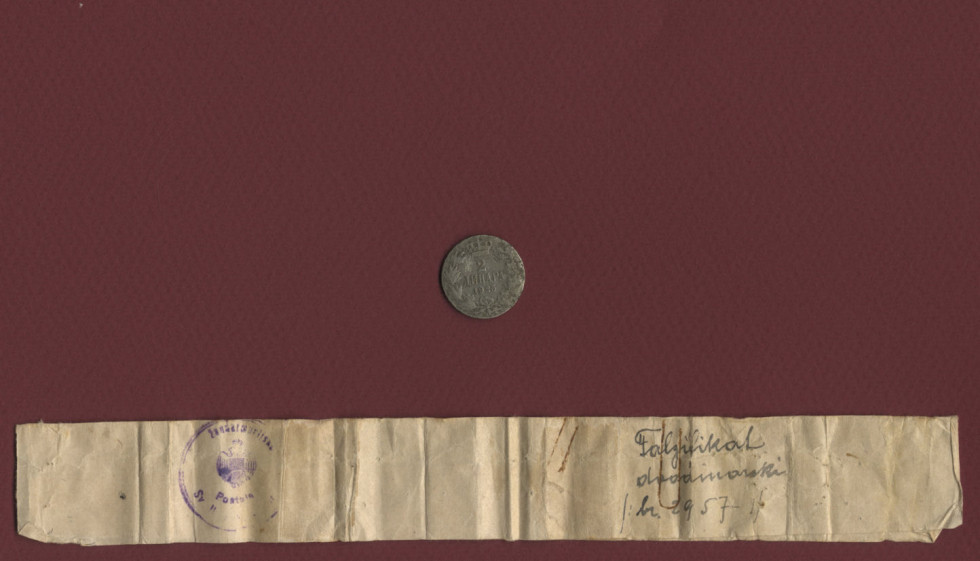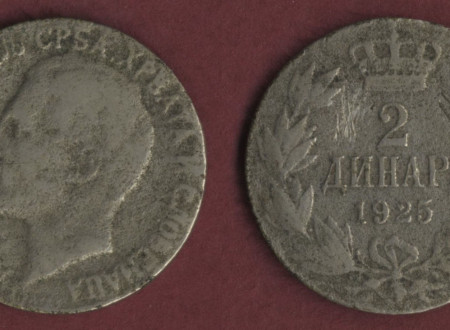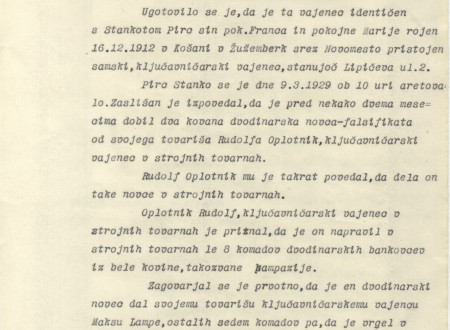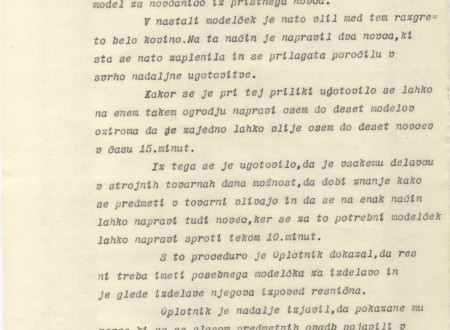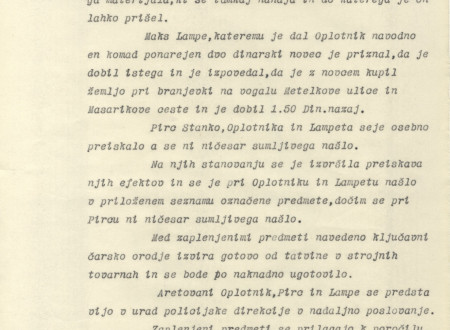Money – Evidence Among Archival Records
Money is a general equivalent of goods expressed by price or by value of the goods. People initially used commodity money, but that gradually turned into coins, state paper money and banknotes, and, most recently, into deposit money.The first minted coins were pieces of metal with certain weight and metal composition, which were guaranteed for by a certain authority. Coins as we understand them today are generally disc-shaped metal plates with seals impressed on them that first appeared in Asia Minor around 600 BC. Banknotes first appeared here in the mid-18th century. The value of coins never quite equalled their metal value, but was always a bit lower so that those who issued money could cover their costs of minting and earn some profit for their own financial needs on account of their right of coinage.
Administrative (II) department of the Drava Banovina carried out the tasks of the Ministry of the Interior, which under the Internal Administration Act fell within the jurisdiction of the Ban (Governor) of the Drava Banovina. The department’s most known Sector for Public Safety among other things dealt also with criminal offences and misdemeanours.
Department’s archival documents also include classification scheme fascicle 13-20 (1924-1930), where among the records of financial and criminal police on lesser offences against excise and duties, records on persecution of suspicious persons, records on supervision of cheats and forgers, and among other denunciations and security reports, one can also find several records on the forgery of money. Nestled among these documents there’s even a fake 2 dinar coin of the Kingdom of Serbs, Croats and Slovenes. It bears the portrait of King Aleksander Karađorđević I. with lettering "ALEKSANDAR I, KRALJ SRBA, HRVATA I SLOVENACA A. PATEY" (engraver) on the obverse, or the front of the coin, and a crown and a wreath surrounding a value of 2 dinars with the year 1925 on the reverse. All the lettering on the coin is in Cyrillic alphabet.
A well-made fake coin is enclosed as evidence to a group of documents about the forgery of 2 dinar coins, although its wrapping bears the number of a document that has not been preserved. Judging from the Report of the police agents (II/no. 3785/2-1929), both forgers were as apprentice locksmiths working for the company Strojne tovarne in livarne d. d. (Machine Factories and Foundries) in Ljubljana and allegedly made a number of such fake coins. The report provides a detailed description of the whole process of casting coins. The original coin was made of an alloy of nickel and bronze, weight 9.2 g, diameter 27 mm, thickness 2.05 mm, and was of a round shape with patterns on its edge. Forgers had a number of things working in their favour. Their job at the foundry gave them access to graphic dust that they needed for the matrix, they could also get hold of a mould for the casting of the coins, and for alloy they used white metal called composition. Documents on similar offences of counterfeiting 2 dinar coins reveal that other forges were due to limited technical possibilities forced to use lead because of its low melting point, but such coins were softer, heavier, darker that the original alloy, and they had a hollow, indistinct sound. At the time, a 2 dinar coin could buy you an issue of daily papers, such as Slovenec and Jutro, or an apprentice could “with that coin buy a bread roll from street bread merchant at the corner or Metelkova and Masarykova street and get a change of 1.5 dinar back”.
That forging of money is still very much alive, is nicely illustrated by the fact that in our newly independent state of Slovenia already in the second half of June 1992, forgeries of the first Slovenian official banknotes, Slovene tolars, appeared in circulation. Even before that, there were forgeries of the temporary coupons of the Republic of Slovenia. Forging of money continues with Euros as well, but these days the process is known only to forgers themselves and to law enforcement authorities, since records on such activities are still “too young” to be transferred into archives.
Gašper Šmid


